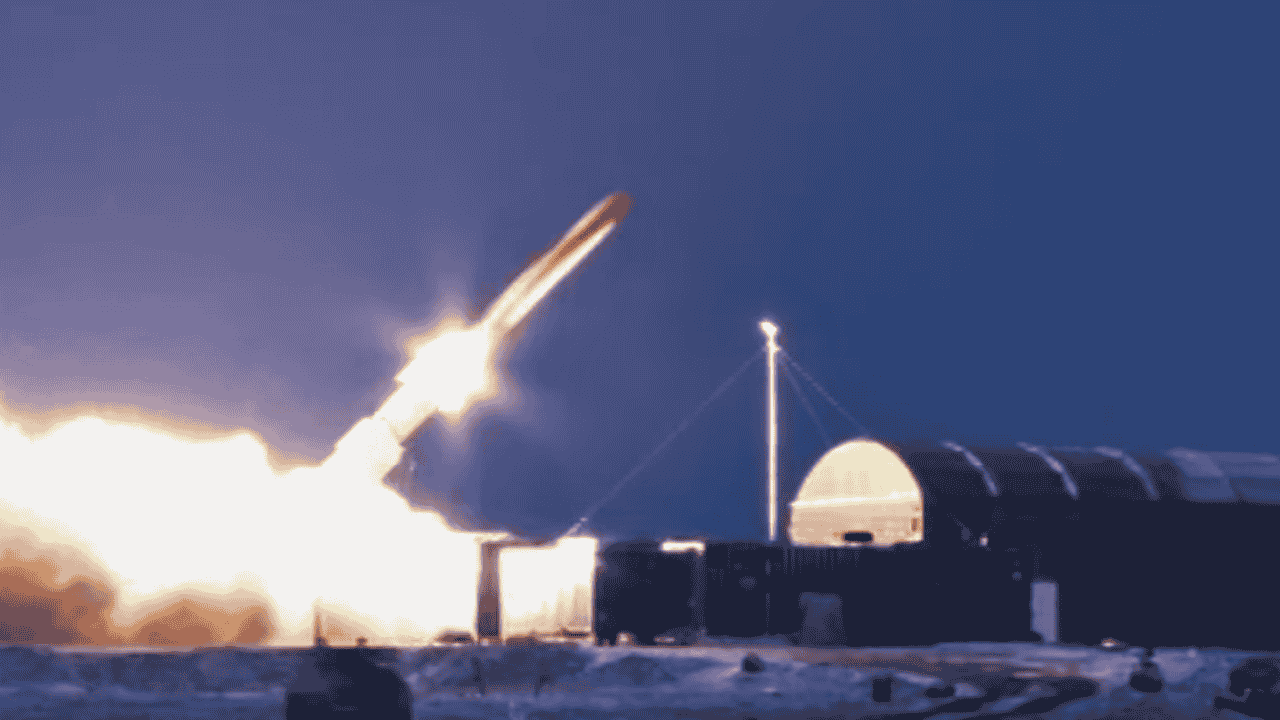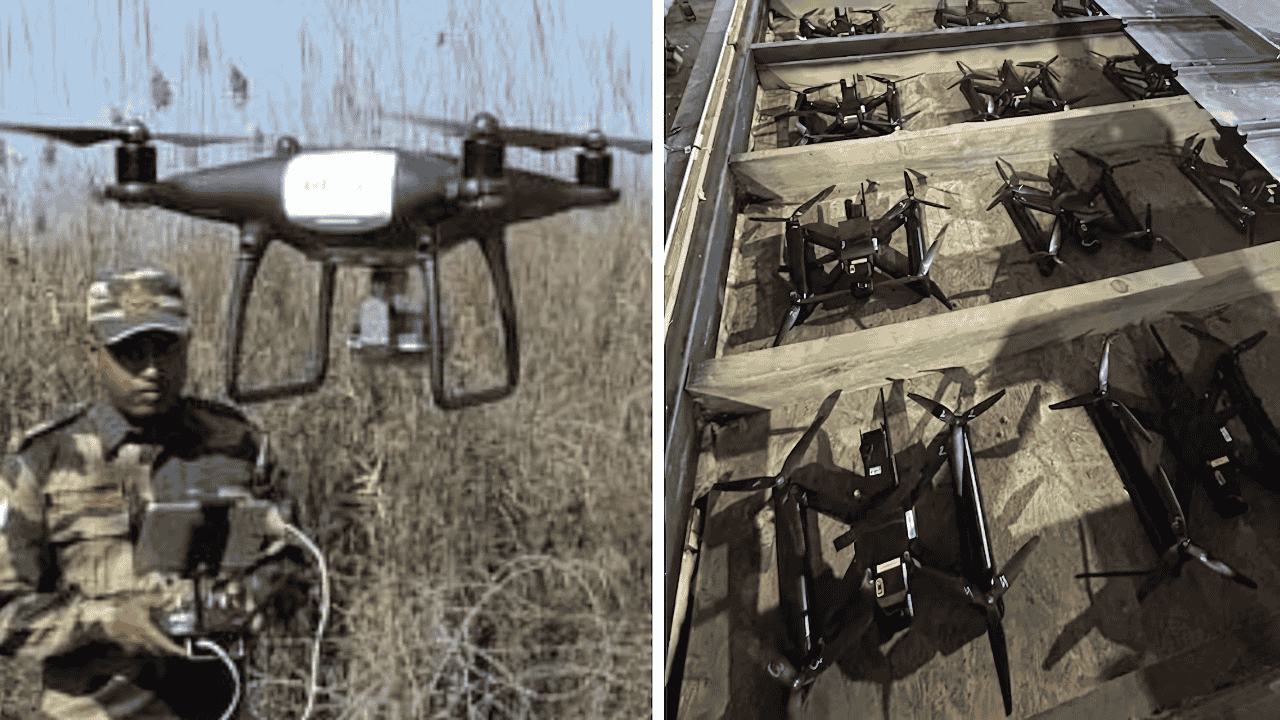In a groundbreaking development that has sent shockwaves through global defense establishments, Russia announced the successful test of the 9M730 Burevestnik—the world's first operational nuclear-powered cruise missile. On October 21, 2025, this revolutionary weapon system flew for 15 hours covering 14,000 kilometers, marking a potential paradigm shift in strategic nuclear deterrence. For UPSC and competitive exam aspirants, this development carries immense significance across multiple dimensions including international relations, defense studies, science and technology, and current affairs.
Understanding the Burevestnik: A Game-Changing Weapons System
The Burevestnik, meaning "Storm Petrel" in Russian and designated SSC-X-9 Skyfall by NATO, represents a technological leap in missile systems that challenges conventional understanding of strategic weapons. Russian President Vladimir Putin personally oversaw the briefing where Chief of General Staff Valery Gerasimov reported the successful test, calling it a "unique product that no other country possesses".
Technical Specifications and Capabilities
Key Technical Features:
Propulsion System: Nuclear turbojet engine (miniature nuclear reactor)
Range: Theoretically unlimited; demonstrated 14,000 km flight capability
Flight Duration: 15+ hours (described as "not the limit")
Operational Altitude: 25-100 meters (50-100 meters per some sources)
Speed: 850-1,300 kilometers per hour (subsonic)
Warhead: Nuclear-capable payload
Estimated Maximum Range: 10,000-20,000 kilometers according to strategic analysis
The missile's nuclear propulsion system fundamentally distinguishes it from conventional cruise missiles. Unlike traditional missiles that depend on chemical fuel with limited range, the Burevestnik uses a compact nuclear reactor that provides continuous thrust, theoretically allowing it to remain airborne for days or even circle the globe multiple times.
Strategic Significance: Why This Test Matters
Evading Missile Defense Systems
Russia claims the Burevestnik possesses unprecedented capabilities to bypass existing and future missile defense systems. Operating at extremely low altitudes (50-100 meters), the missile can fly beneath conventional radar detection systems. Its ability to execute both vertical and horizontal maneuvers during flight allows it to change course unpredictably, making interception nearly impossible.
General Gerasimov emphasized that the test demonstrated "high capabilities to bypass missile and air defense systems", presenting a formidable challenge to Western defensive infrastructure including the United States' anti-ballistic missile shield.
Global Reach from Any Launch Point
The International Institute for Strategic Studies assessed that the Burevestnik could have a notional range of up to 20,000 kilometers, meaning it could be launched from anywhere within Russian territory and still reach targets in the United States. This capability fundamentally alters the strategic calculus of nuclear deterrence by eliminating traditional geographic constraints on missile deployment.
Loitering Capability: A New Dimension in Nuclear Strategy
Perhaps most concerning to Western military planners is the missile's ability to "loiter"—remaining airborne for extended periods before striking its target. According to the Nuclear Threat Initiative, the Burevestnik could potentially stay aloft for days, circling the globe at low altitude and dropping nuclear warheads at unpredictable locations. This capability introduces unprecedented uncertainty into crisis scenarios and defense planning.
Historical Context: From Cold War Concepts to Modern Reality
Project Pluto: America's Abandoned Nuclear Missile
The concept of nuclear-powered cruise missiles is not new. During the Cold War, the United States pursued Project Pluto from 1957 to the early 1960s, attempting to develop similar technology. However, the program was abandoned due to concerns about radiological dangers, technical challenges, and the perception that such weapons were too provocative and less effective than Intercontinental Ballistic Missiles (ICBMs).
The technical issues that plagued Project Pluto continue to raise questions about the Burevestnik. Nuclear-powered flight requires either a closed-loop system (technically complex and heavy) or an open-loop system (lighter but radiologically dangerous, essentially creating a "flying Chernobyl").
Russia's Development Timeline
President Putin first revealed the Burevestnik project in March 2018 during his state-of-the-nation address, presenting it as one of six new strategic weapons designed to counter Western missile defense systems. Development reportedly began after the United States withdrew from the 1972 Anti-Ballistic Missile Treaty in December 2001.
The missile's testing history has been fraught with failures. According to the Nuclear Threat Initiative, of at least 13 known tests since 2016, only two achieved partial success before this recent announcement. A catastrophic failure in August 2019 at Nyonoksa testing range resulted in a deadly explosion that killed at least five Russian nuclear scientists and released radiation into the environment.
Geopolitical Context: Nuclear Messaging Amid Rising Tensions
Timing: Russia-West Relations at Breaking Point
The Burevestnik test announcement comes at a critical juncture in international relations. The test occurred on October 21, 2025, just days after Russia conducted comprehensive nuclear readiness drills involving land, sea, and air-based strategic forces. These exercises included launches of Yars intercontinental ballistic missiles, Sineva submarine-launched missiles, and air-launched cruise missiles from Tu-95MS bombers.
The announcement coincided with heightened diplomatic tensions. A planned meeting between President Putin and U.S. President Donald Trump in Budapest was postponed, with Kremlin spokesman Dmitry Peskov emphasizing that "well-prepared, results-oriented discussions" are necessary before any summit. This diplomatic breakdown occurred as Western pressure intensified for a ceasefire in Ukraine, where Russia's war has continued for over three and a half years.
NATO's Response and Deterrence Posture
Earlier in October 2025, NATO conducted its "Steadfast Noon" nuclear exercise involving over 70 aircraft from 14 allied nations, including F-35s and B-52 bombers, across Belgium and the Netherlands. Russia's Burevestnik test can be interpreted as a direct response to NATO's nuclear readiness demonstrations, reinforcing Moscow's military preparedness and strategic messaging.
Western officials have responded cautiously to the Burevestnik announcement. Jeffrey Lewis, a nuclear nonproliferation expert from Middlebury College, described it as a "flying Chernobyl," highlighting environmental and safety concerns. British defense experts in 2020 warned that Moscow was testing a nuclear-powered cruise missile with "global reach [that] would allow attack from unexpected directions" and provide "near indefinite loiter time".
Strategic Stability Concerns
The Burevestnik represents a destabilizing factor in the already fragile nuclear arms control architecture. The New START Treaty (Strategic Arms Reduction Treaty), signed in 2010 between the United States and Russia, limits each side to 1,550 deployed nuclear warheads and 800 launchers. However, Russia suspended its compliance with New START in 2023, significantly weakening the last remaining strategic arms control framework from the Cold War era.
Experts warn that weapons like the Burevestnik could trigger a new nuclear arms race. According to a 2025 SIPRI Yearbook finding, "a dangerous new nuclear arms race is emerging at a time when arms control regimes are severely weakened". Russia and the United States together hold approximately 87% of the world's nuclear warheads—5,459 and 5,177 respectively—enough to destroy the planet multiple times over.
Technical Challenges and Western Skepticism
Despite Russia's triumphant announcements, Western experts remain skeptical about the Burevestnik's operational viability and strategic value.
Engineering and Safety Concerns
The fundamental challenge of nuclear-powered flight involves packaging a nuclear reactor small enough to fit within a cruise missile envelope while maintaining reliability for potentially multi-day flights. An open-loop nuclear ramjet system—likely the most achievable design given weight constraints—would vent superheated and potentially radioactive air, creating severe environmental and safety hazards.
Decker Eveleth, a research analyst specializing in nuclear weapons, wrote in Foreign Policy that the Burevestnik is "not a wonder weapon" and that "so far, the only people the Burevestnik has killed are its own designers". He argued that the technical infeasibility of the missile's mission limits its actual threat, suggesting that much of the concern stems from Russian propaganda about its capabilities.
Detection and Vulnerability
Some Western analysts contend that the Burevestnik's subsonic speed makes it detectable and potentially vulnerable, especially during extended flight times. While low-altitude flight complicates radar detection, modern space-based tracking systems could potentially detect the missile during its initial launch phase. The longer the missile remains airborne, the greater the opportunity for defensive systems to track and potentially intercept it.
Strategic Value Questions
Several defense experts question whether the Burevestnik significantly enhances Russia's strategic capabilities. Russia already possesses a robust nuclear triad consisting of land-based ICBMs, submarine-launched ballistic missiles, and air-launched cruise missiles—all capable of reaching any point on Earth. Critics argue that the Burevestnik adds complexity and risk without providing substantial military advantages beyond existing arsenals.
Russian military analyst Alexei Leonkov offered a different perspective in 2019, stating that Burevestniks would target remaining enemy command centers, military installations, factories, and power plants after Russia has already launched ICBMs—essentially completing the destruction of adversary infrastructure after initial nuclear strikes.
Exam-Relevant Connections: Beyond Headlines
International Relations Dimensions
For UPSC General Studies Paper 2 (International Relations):
Shift in Strategic Balance: The Burevestnik test demonstrates Russia's continued investment in strategic deterrence capabilities despite economic sanctions and international isolation
Erosion of Arms Control Regimes: Highlights the collapse of Cold War-era arms control frameworks including the INF Treaty (2019), Open Skies Treaty (2020), and effective suspension of New START (2023)
NATO-Russia Dynamics: Illustrates the return to Cold War-style military posturing and mutual deterrence between Russia and Western alliance
India's Strategic Interests: As a major defense partner with Russia and advocate for nuclear disarmament, India's diplomatic position becomes more complex in this new strategic environment
Science and Technology Applications
For UPSC General Studies Paper 3 (Science & Technology):
Nuclear Propulsion Technology: Understanding nuclear reactor miniaturization and application in propulsion systems
Missile Defense Systems: Comprehending challenges in detecting and intercepting low-altitude, maneuvering threats
Radar and Tracking Technologies: Space-based surveillance versus low-altitude detection capabilities
Nuclear Safety Protocols: Environmental and radiological risks associated with nuclear-powered flight systems
Defense and Security Studies
Strategic Weapons Categories:
First-Strike vs. Second-Strike Capabilities: How unlimited-range systems affect crisis stability and deterrence theory
Nuclear Triad: Land, sea, and air-based nuclear delivery systems and their strategic roles
Missile Defense: Evolution from Cold War MAD (Mutually Assured Destruction) doctrine to modern layered defense architectures
Deterrence Theory: Credibility, capability, and communication in nuclear strategy
India's Nuclear Doctrine Context
India maintains a "No First Use" nuclear doctrine with the principle of credible minimum deterrence. The emergence of weapons like the Burevestnik raises questions about:
Whether minimum deterrence remains viable in an era of advanced missile technologies
The need for upgraded missile defense systems to protect against evolving threats
India's strategic autonomy in a bipolar nuclear competition between Russia-China and the United States-NATO alliance
Current Global Nuclear Landscape: Facts for Competitive Exams
Global Nuclear Weapons Distribution (2025):
Russia: ~5,459 nuclear warheads
United States: ~5,177 nuclear warheads
China: Rapidly expanding arsenal (exact numbers classified)
India: Estimated 160-170 warheads
Pakistan: Estimated 165-175 warheads
Other Nuclear Powers: United Kingdom, France, Israel, North Korea
Key Nuclear Treaties and Their Status:
New START Treaty (2010): Suspended by Russia in 2023; originally limited deployed warheads to 1,550 per side
Treaty on the Non-Proliferation of Nuclear Weapons (NPT, 1968): Remains in force; India is not a signatory
Intermediate-Range Nuclear Forces Treaty (INF, 1987): Collapsed in 2019
Comprehensive Nuclear-Test-Ban Treaty (CTBT): Not yet entered into force; India has not signed
Russia's Other Strategic Weapons: Complete Picture
The Burevestnik is part of a broader Russian strategic modernization program unveiled in 2018. Other systems include:
Avangard: Hypersonic glide vehicle capable of Mach 27 speeds
Kinzhal: Air-launched hypersonic missile with reported 2,000+ km range
Poseidon: Nuclear-powered, nuclear-armed underwater drone (also known as Status-6)
Sarmat (RS-28): Heavy ICBM replacing Soviet-era R-36M missiles
Peresvet: Laser weapon system for air defense
These systems collectively represent Russia's strategy to maintain strategic parity with the United States through technological innovation rather than numerical superiority.
What This Means for Future Deployments
President Putin indicated that while "decisive tests have been completed," significant work remains before operational deployment. Key requirements include:
Classification Determination: Deciding the weapon system's official military category
Infrastructure Development: Building launch facilities, storage, and maintenance capabilities
Operational Doctrine: Integrating the Burevestnik into Russia's nuclear command structure
Production Capacity: Moving from prototype to serial production
U.S. researchers Decker Eveleth and Jeffrey Lewis identified Vologda-20, located approximately 475 kilometers north of Moscow, as the probable deployment site based on 2024 satellite imagery showing launch pad construction and storage facilities.
Putin's statement that preparations should commence for "the final phase prior to the missiles being put into service" suggests deployment could occur within the next few years, though technical challenges may extend this timeline.
Why This Matters for Your Exam Preparation
For UPSC Civil Services Examination
General Studies Paper 2 (Governance, Constitution, Polity, International Relations):
Understanding evolving nuclear deterrence strategies in contemporary international relations
Analysis of arms control regime breakdown and implications for global security architecture
Russia's strategic autonomy and multipolar world order dynamics
NATO expansion concerns and Russia's security perceptions
General Studies Paper 3 (Technology, Economic Development, Security):
Advanced missile technology and defense systems
Nuclear propulsion applications and challenges
India's defense preparedness and strategic programs
Internal security implications of emerging military technologies
Essay Paper:
Potential topics: "Nuclear weapons: tools of deterrence or harbingers of destruction," "The return of great power competition in the 21st century," "Technology and modern warfare"
For Other Competitive Examinations
SSC, State PSC, Banking, and Railway Exams:
Current affairs questions on recent military developments
Russia-related questions in international affairs sections
Defense technology terms and definitions
Names of key weapons systems and their capabilities
Defense Services Examinations (NDA, CDS, AFCAT):
Strategic weapons systems and their operational characteristics
Nuclear deterrence theory and applications
Missile defense systems and counter-measures
Contemporary security challenges
Key Terms to Remember
9M730 Burevestnik / SSC-X-9 Skyfall: Russia's nuclear-powered cruise missile
Nuclear Propulsion: Use of nuclear reactor for continuous thrust generation
Strategic Deterrence: Preventing adversary actions through credible threat of unacceptable consequences
New START Treaty: Last remaining U.S.-Russia strategic arms control agreement
Nuclear Triad: Three-component nuclear force (land, sea, air)
Loitering Capability: Ability to remain airborne for extended periods before target strike
Missile Defense Shield: Integrated system to detect and intercept incoming missiles
Practice Questions
Mains-Style Question:
"Russia's recent test of the Burevestnik nuclear-powered cruise missile represents a paradigm shift in strategic deterrence. Critically analyze the implications of such weapons systems for global nuclear stability and arms control regimes." (250 words)
Prelims-Style Questions:
The Burevestnik missile system recently tested by Russia is powered by:
(a) Conventional jet fuel
(b) Hypersonic scramjet engine
(c) Nuclear reactor
(d) Solid fuel propellant
Which treaty limiting strategic nuclear weapons between the U.S. and Russia was effectively suspended in 2023?
(a) INF Treaty
(b) New START Treaty
(c) SALT II Treaty
(d) Open Skies Treaty
Conclusion: A New Chapter in Nuclear Competition
The successful test of the Burevestnik nuclear-powered cruise missile marks a significant moment in the evolution of strategic weapons and great power competition. Whether viewed as a genuine technological breakthrough or an expensive propaganda exercise, the Burevestnik reflects Russia's determination to maintain strategic relevance in an era of rapid military modernization and collapsing arms control frameworks.
For aspirants preparing for competitive examinations, this development offers a comprehensive case study connecting international relations, defense technology, strategic studies, and contemporary affairs. Understanding the technical specifications, strategic implications, and broader geopolitical context of such weapons systems is essential for holistic exam preparation.
As the international community grapples with the implications of nuclear-powered missiles, space-based weapons, and hypersonic systems, the foundations of strategic stability established during the Cold War face unprecedented challenges. The question remains whether new diplomatic initiatives can establish guardrails for this emerging nuclear competition—or whether the world is entering a dangerous new era of unconstrained arms racing.
For more current affairs updates and UPSC preparation materials, visit www.atharvaexamwise.com and subscribe to our YouTube channel for daily analysis and expert guidance.







